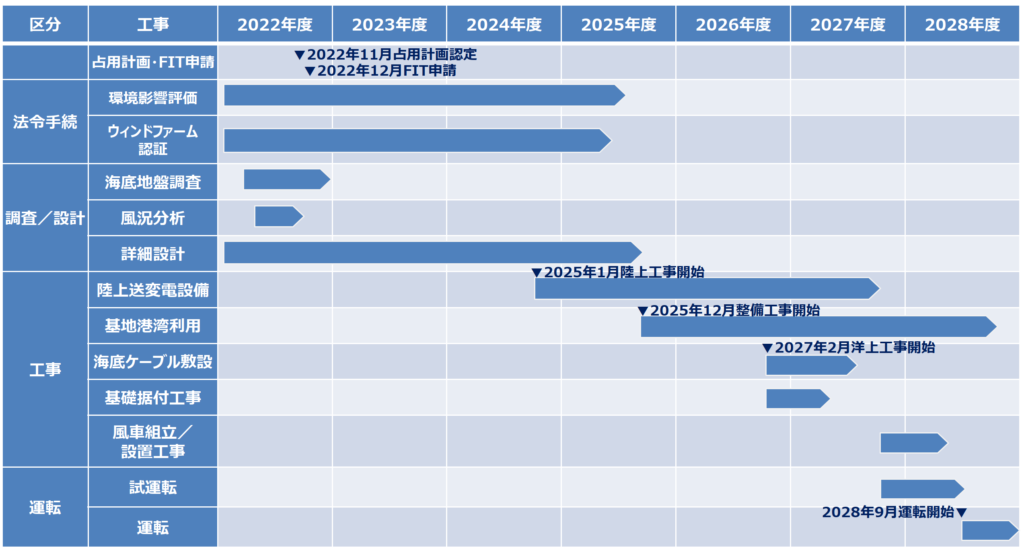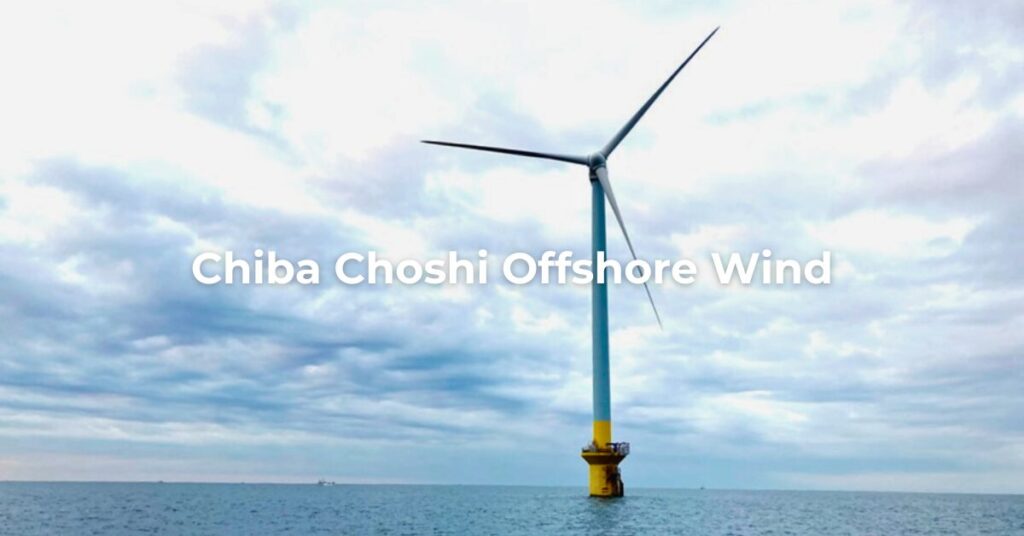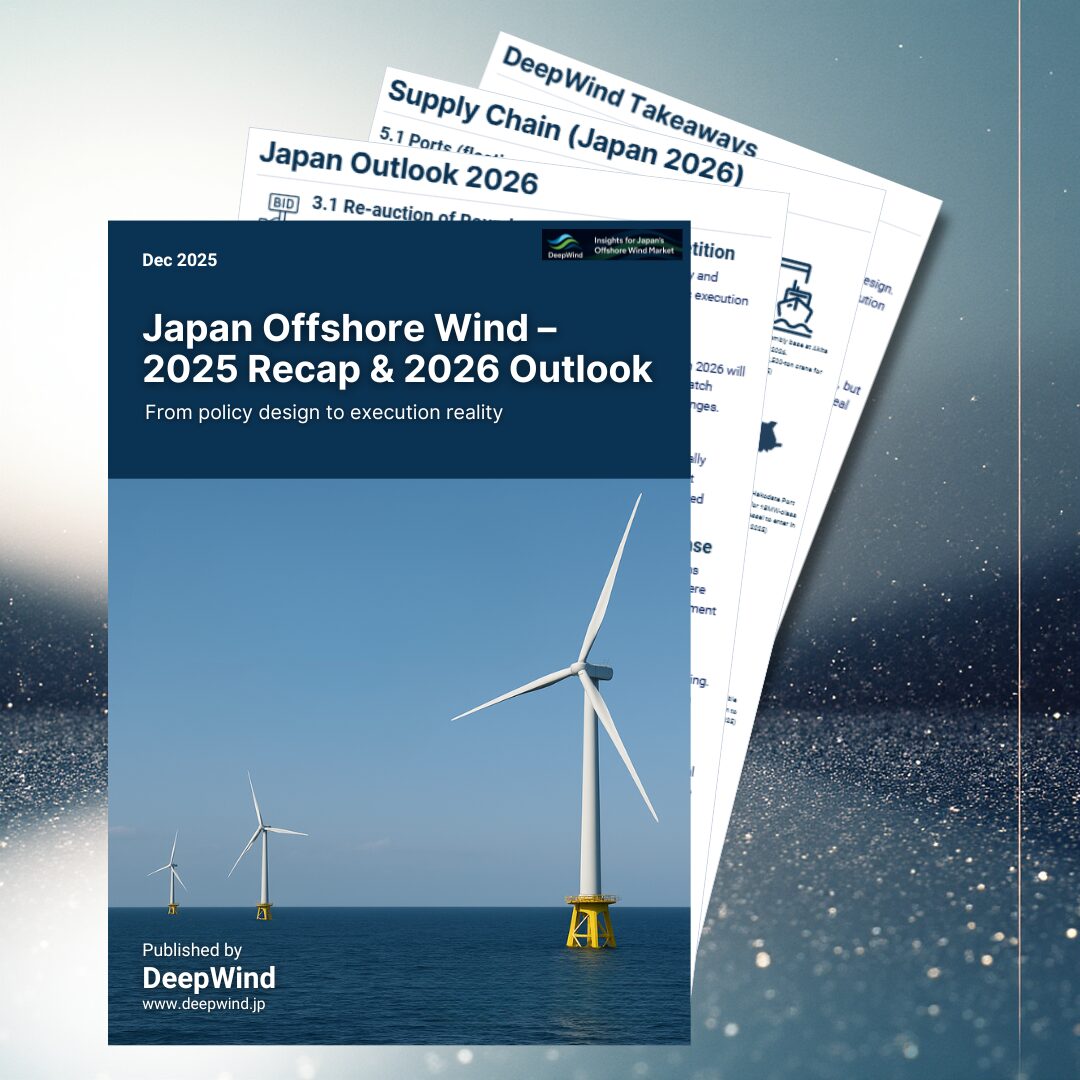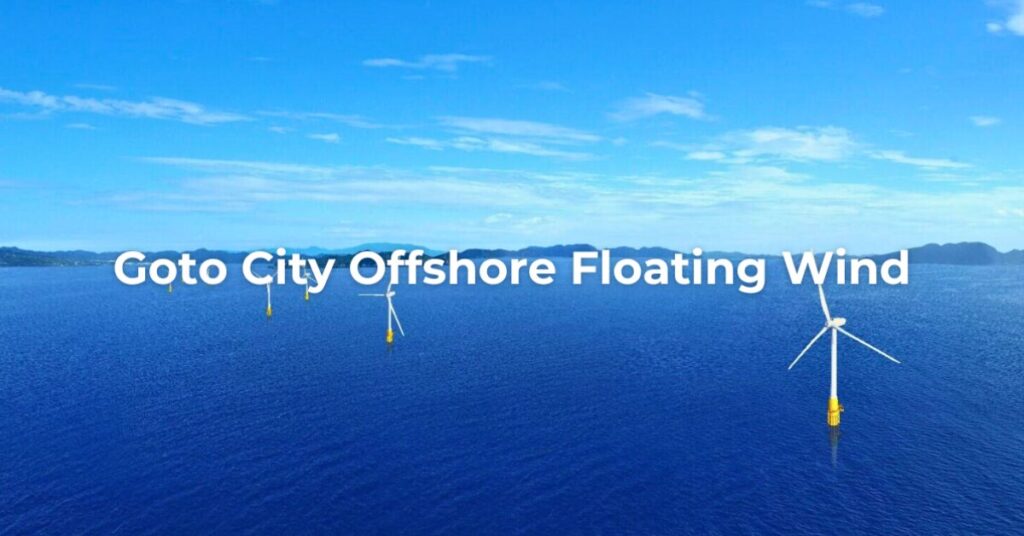Chiba Choshi Offshore Wind Power Project is set to play a crucial role in Japan’s renewable energy expansion. As part of the country’s efforts to transition toward clean energy, this project will significantly contribute to reducing carbon emissions and enhancing energy security. With a planned capacity of 403 MW, the Choshi project will reinforce Japan’s commitment to offshore wind development.
➡ For an overview of all ten Promotion Areas as of 2025, see:
Promotion Areas for Offshore Wind in Japan – 2025 Overview
1. Project Overview
| Project name | Chiba Choshi Offshore Wind |
| Developer | Chiba Choshi Offshore Wind LLC |
| Partners | Mitsubishi Corporation Offshore Wind Ltd. C-TECH CORPORATION Mitsubishi Corporation |
| Location | Offshore CHoshi City, Chiba Prefecture |
| Type | Fixed-bottom Offshore Wind Power |
| WTG | GE |
| Price | 16.49 JPY/kWh |
| Capacity | 403 MW (13 MW × 31 turbines) |
| Start of Construction | 2025 |
| Operation Period | September 2028 – January 2052 |
2. Location
2-1. Sea & Geographical Features
The Pacific coast is an area where the Kuroshio Current (warm current) and the Oyashio Current (cold current) meet, and the wind conditions are good. The ocean floor is shallow, making it possible to set up the device at a relatively shallow depth (up to about 20m).
2-2. Port Infrastructure & Grid Connection
The construction will utilize Kashima Port in Ibaraki Prefecture, and the operation and maintenance base will be Naarai Port in Choshi City. It is planned to connect to Tokyo Electric Power Company PG’s Shin-Sawara substation to transmit electricity to the Tokyo metropolitan area.

3. Overview of Wind Turbine Facilities

4. Project Timeline & Development Phases
4-1. Overall schedule
- 2021 December: Project selected for development
- 2022-2024: Environmental impact assessments, seabed surveys, and project planning
- 2025 January: Onshore construction begins
- 2027 February: Offshore construction starts
- 2028 September: Expected commercial operation date
- 2052 January: Planned decommissioning and site restoration

The construction phase will take approximately three to four years, ensuring a well-structured and sustainable development process aligned with Japan’s energy transition goals.
4-2. EIA status
| Prefecture | Project name | Developer | EIA Stage | Project Scale | Last updated |
|---|---|---|---|---|---|
| Chiba | (Tentative name) Offshore Wind Power Project off Choshi City, Chiba Prefecture | Chiba Choshi Offshore Wind GK | Environmental Impact Assessment Draft | Total output: up to 403 MW; per-turbine output: 13 MW; number of turbines: 31 | Feb 4, 2025 |
| Chiba | (Tentative name) Offshore Wind Power Project off Choshi | Tokyo Electric Power Company Holdings, Inc. | Project Terminated | Up to 370 MW (5.2–12 MW class × up to 72 turbines) | May 21, 2024 |
5. Reviewing the Business Plan from Scratch?
Mitsubishi Corporation announced that it had recorded an impairment loss of 52.2 billion yen for the April–December 2024 period due to a reassessment of its three domestic offshore wind projects. At a press conference, President Katsuya Nakanishi stated, “We take the impairment seriously” and indicated that the company will reconsider its future business policy from scratch.
5-1. Causes of the Impairment and Future Policy
Mitsubishi Corporation won bids for three projects in 2021 and has been developing them for about three years. However, due to global inflation, yen depreciation, and rising interest rates, project costs significantly exceeded expectations. As a result, the company is reassessing profitability, with a final decision on whether to continue the projects to be made in the future.
The company also explained that nearly all recorded assets have been written off, and although further impairment losses may occur, the impact would be limited.
5-2. Breakdown of the Impairment Loss
Expenses related to surveys, design, and permitting had been recorded as assets but are now entirely written off. The total of already-paid expenses and expected future costs amounts to 52.2 billion yen.
5-3. About the Bid Pricing
In the 2021 auction, Mitsubishi Corporation won the projects with significantly lower bids than its competitors. The company explained that the decision was based on risk analysis using the expertise of Eneco. However, higher-than-expected inflation and cost increases greatly impacted the projects’ profitability.
5-4. Future of the Offshore Wind Business
Mitsubishi Corporation recognizes offshore wind as a key power source for a decarbonized society. Going forward, it intends to carefully assess its business strategy in light of inflation, interest rates, and currency trends.
6. Mitsubishi-led Consortium to Exit Three Offshore Wind Projects in Japan-Aug 26th
Mitsubishi Corporation and partners are preparing to withdraw from offshore wind projects across three sites off Chiba and Akita prefectures.
6-1. Why Exit?
- Ultra-low bid prices during the auction
- Rising material and construction costs
- Projects deemed no longer economically viable
This marks a major setback for Japan’s flagship renewable energy program.
Re-tendering is expected, but the withdrawal highlights the challenges of balancing cost-competitive auctions with the realities of supply chain inflation and project financing.
6-2. Implications
- Investor confidence hinges on how the government resets its renewable energy policy
- Japan’s offshore wind strategy may face a significant review
- Timeline pressure toward the 2030 (10 GW) and 2040 (30–45 GW) national targets increases
7. CAPEX/OPEX Estimates
Evaluating the profitability of offshore wind projects requires close attention to cost-related indicators such as CAPEX, OPEX, LCOE, and IRR. However, in Japan’s designated Promotion Zones, publicly available cost data remain scarce, leaving investors and developers with limited information for decision-making.
To address this, we estimated CAPEX, OPEX, LCOE, and IRR using the NEDO cost model, based on representative site conditions including distance to shore, water depth, and distance to port.
👉 Read the full article here
Conclusion
The Choshi Offshore Wind Power Project is a landmark initiative that strengthens Japan’s position as a leader in offshore wind energy. By focusing on sustainability, economic development, and technological advancement, the project paves the way for a cleaner, greener future.
For investors, policymakers, and industry experts, this initiative marks a significant step forward in Japan’s energy transformation. Stay connected with DeepWind for the latest updates on offshore wind developments in Japan.
To explore how this area compares nationally and understand Japan’s offshore wind roadmap, visit:
Promotion Areas for Offshore Wind in Japan – 2025 Overview —
your guide to Japan’s offshore wind Promotion Areas.
Explore more categories at DeepWind:
- 🔍Market Insights – Understand the latest trends and key topics in Japan’s offshore wind market
- 🏛️Policy & Regulations – Explore Japan’s legal frameworks, auction systems, and designated promotion zones.
- 🌊Projects – Get an overview of offshore wind projects across Japan’s coastal regions.
- 🛠️Technology & Innovation – Discover the latest technologies and innovations shaping Japan’s offshore wind sector.
- 💡Cost Analysis – Dive into Japan-specific LCOE insights and offshore wind cost structures.



